Explain:
a. α-Halocarbonyl compounds, even the 3∘ types like 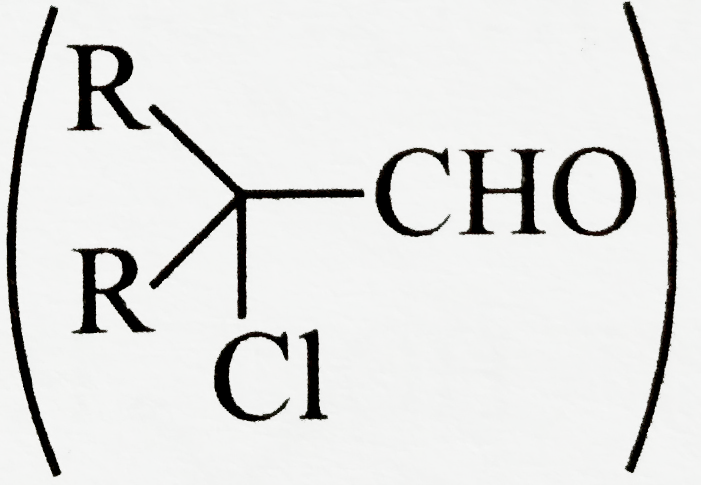 , do not undergo SN1 reaction.
, do not undergo SN1 reaction.
b. Which is more reactive: (i) PrCI or (ii) MeCOCH2CI with NaI/acetone ?
c. Acetals and ketals are regenerated back to carbonyl. compounds with H3O⊕ but not with ΘOH.
d. Cyclohexane is more reactive than cyclopenatone with HCN.
a. In the first step of SN1 reaction, a carbocation is formed. The carbocation formed is unstable is due to the presence of positive charges on adjacent C atoms.

b. Both are 1∘ and undergo SN2 reaction.
Reactivity of (ii) gtgt (i). The high reactivity of (ii) in SN2 reaction is due to the stabilising effect produced in the transition state of ketone by the overlap of adjacent π-bond with the p-orbital of the sp2-hybridised C atom. This type of overlap is also responsible for the high reactivity of allyl halides in SN2 reaction.
i. 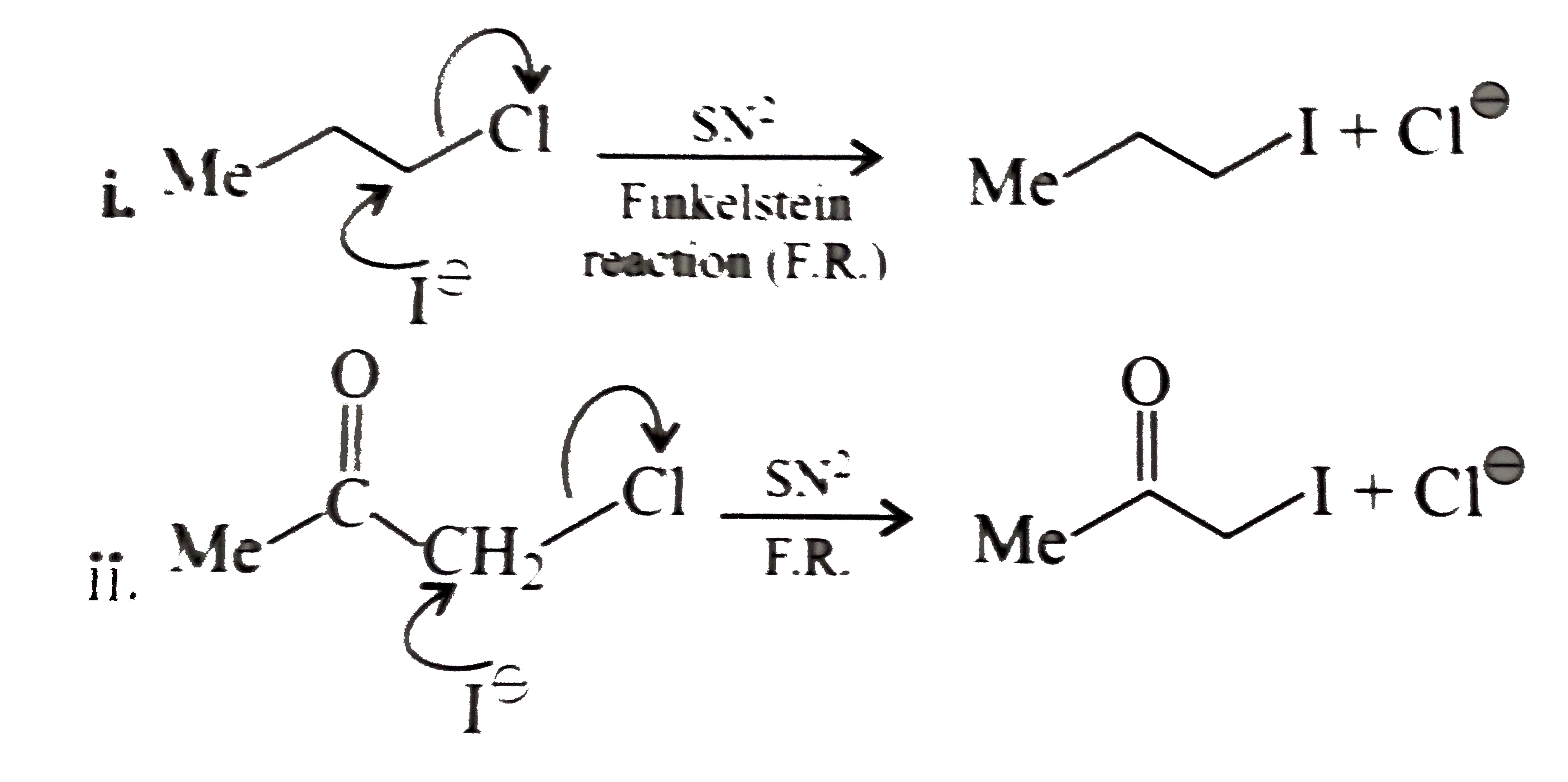
ii. 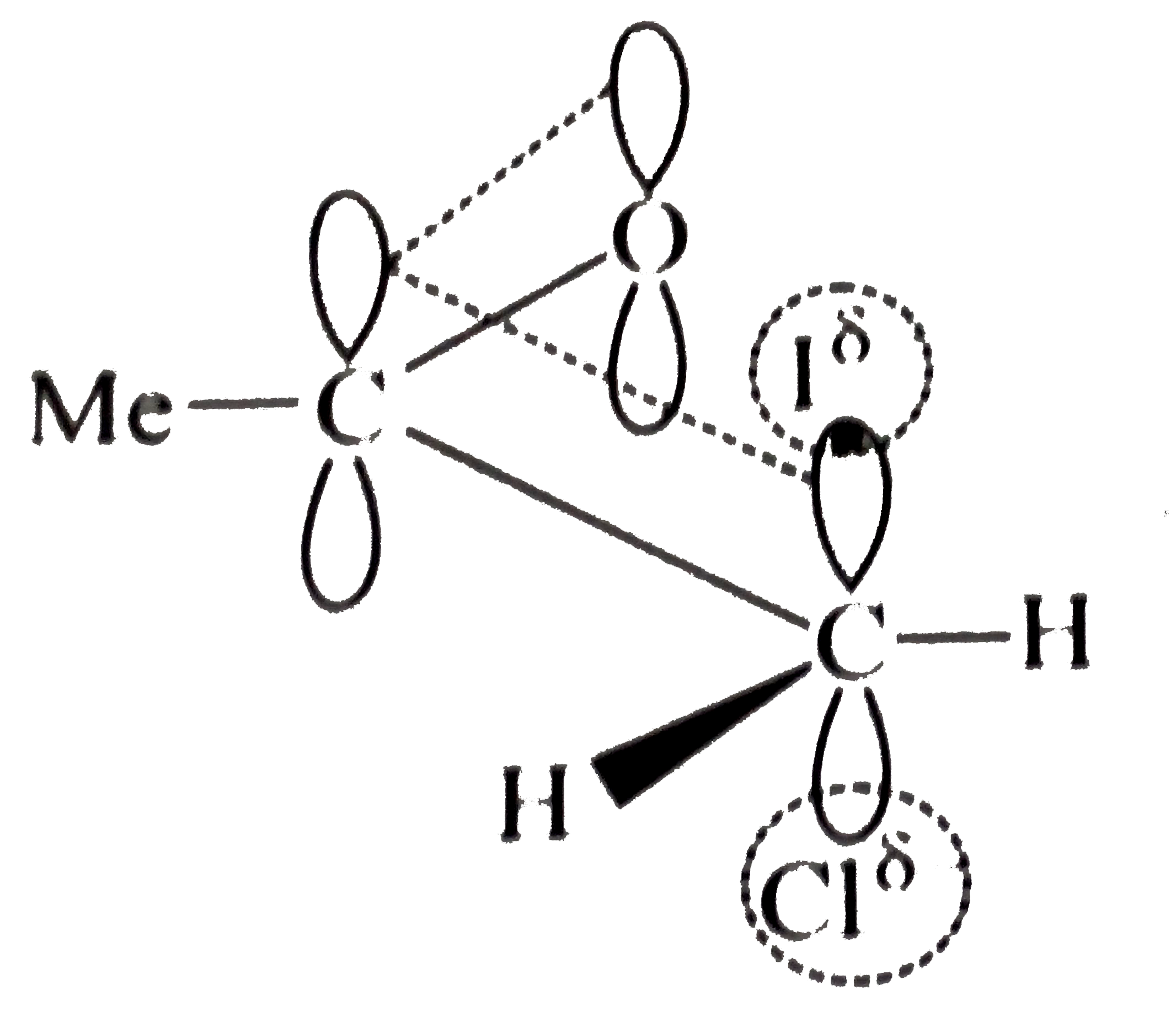
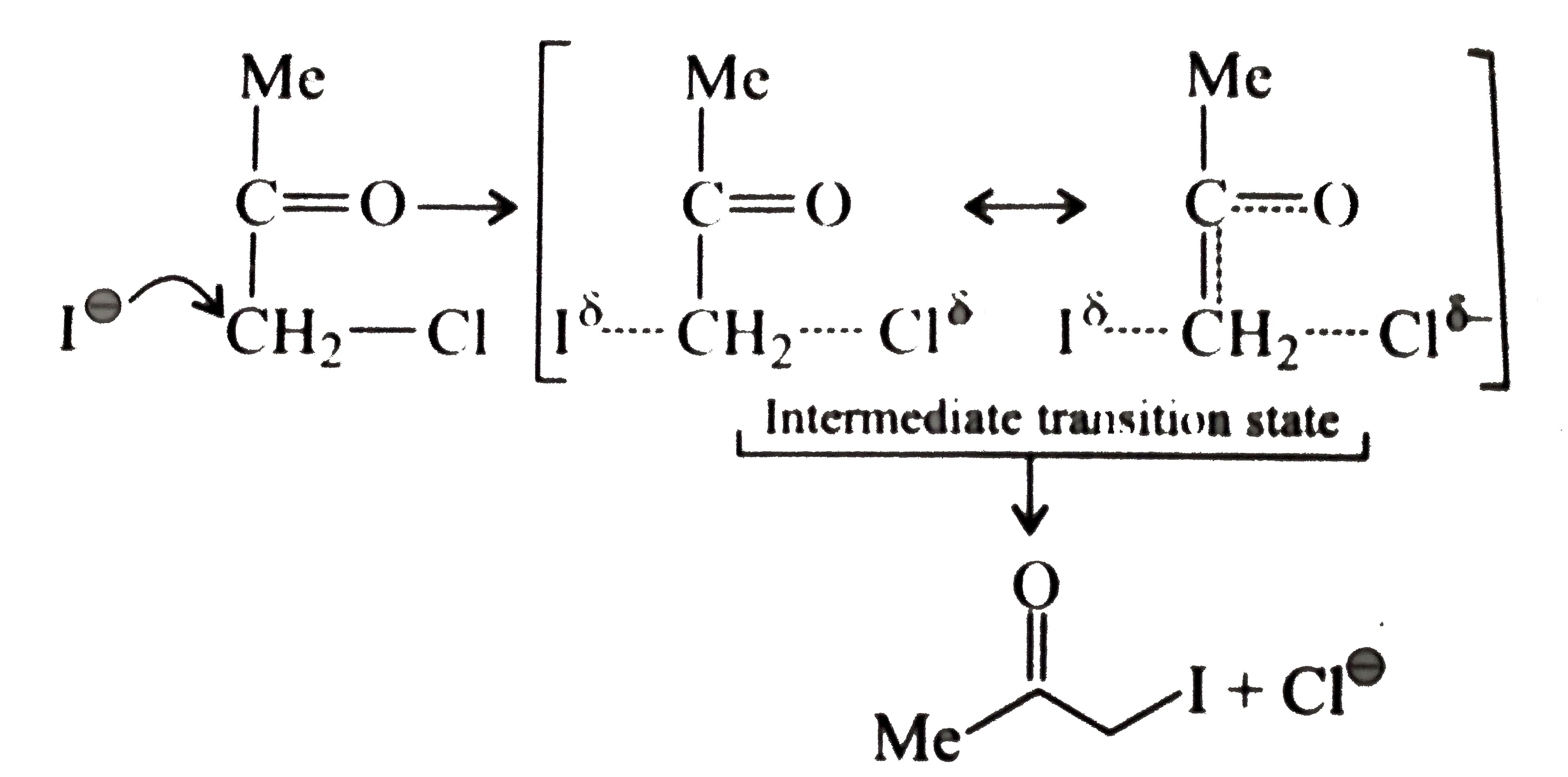
c. The formation of hemiacetal or half hydrate takes place in acid only. Its not possible in base because a weaker base (ΘOH) cannot displace stronger base (ROΘ). But the formation of acetal form hemiacetal can take place by both acid and base. So reverse process of hemiacetal to (C=O) compound can occur only with acid but not with base.
d. 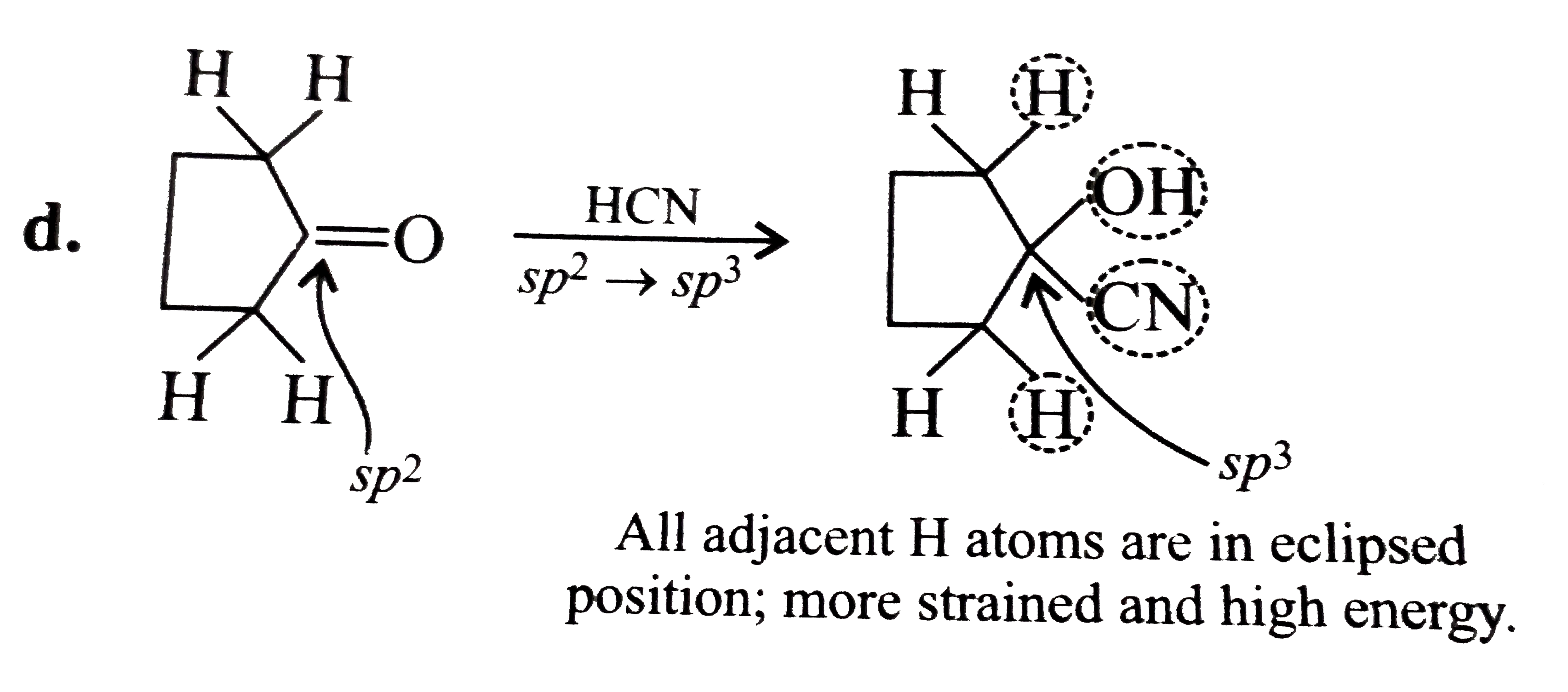
i. In cyclopentanone, the hybridisation of C atom of (C=O) group change form sp2→sp3, which increases the strain due to eclipsing interaction.
ii. In cyclohexane, the hybridisation of C atom of (C=O) group changes form sp2→sp3, but destabilisation effect is lost as there is no eclipsing interaction.
∣∣
∣
∣
∣
∣
∣∣Five-membered ringSix-membered ringi.Reaction in which hybridisation changes fromsp2→sp3are unfavorableReaction in which hybridisation changes fromsp2→sp3are favourableii.Reaction in which hybridisation changes fromsp3→sp2are favourableReaction in which hybridisation changes fromsp3→sp2are unfavourable∣∣
∣
∣
∣
∣
∣∣
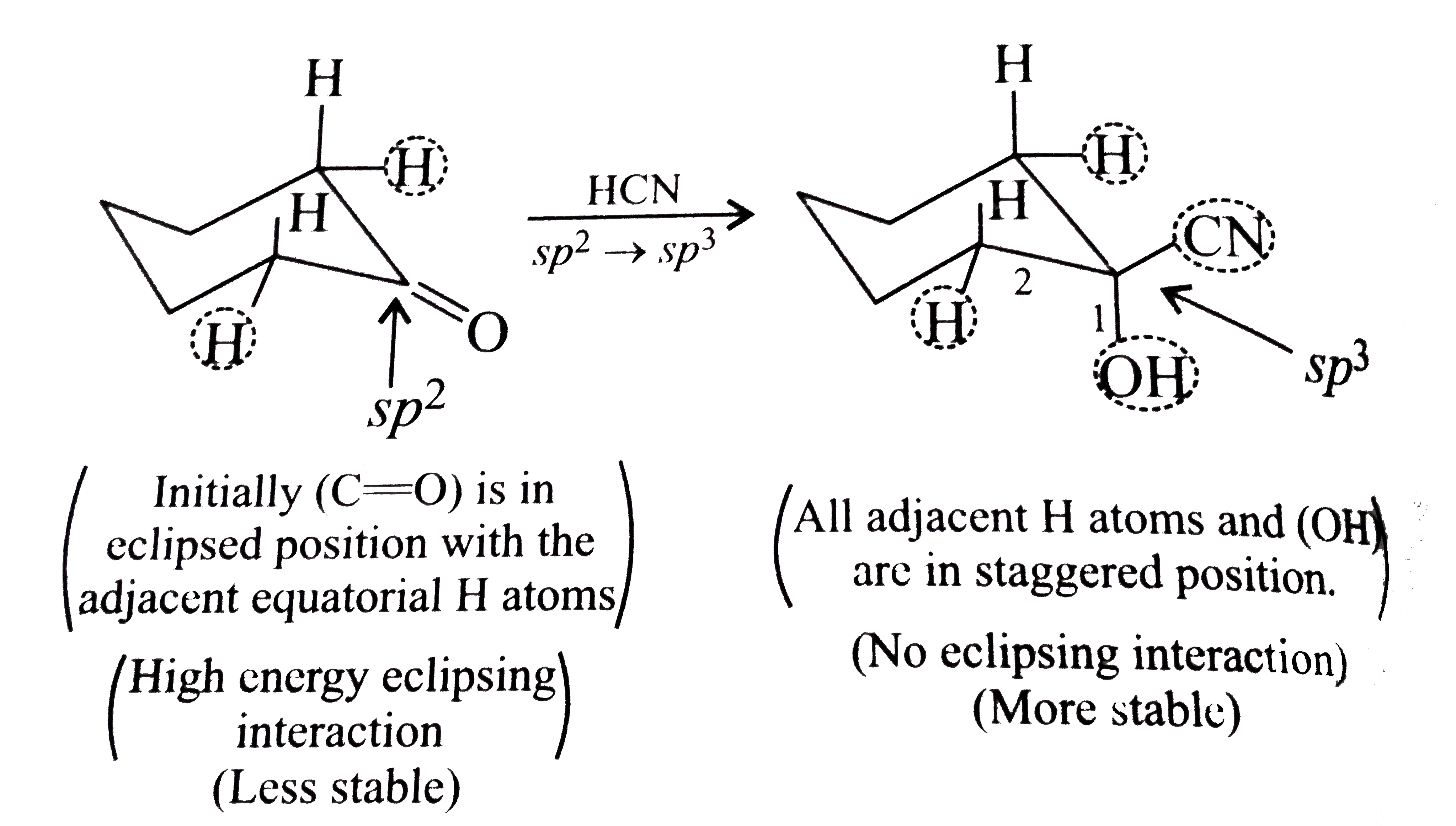
Topper's Solved these Questions
- BOOK - CENGAGE CHEMISTRY ENGLISHCHAPTER - ALIPHATIC AND AROMATIC ALDEHYDES AND KETONESEXERCISE - Exercises Subjective52videos
ALIPHATIC AND AROMATIC ALDEHYDES AND KETONES
- BOOK - CENGAGE CHEMISTRY ENGLISHCHAPTER - ALIPHATIC AND AROMATIC ALDEHYDES AND KETONESEXERCISE - Exercises Concept Application20videos
ALIPHATIC AND AROMATIC ALDEHYDES AND KETONES
- BOOK - CENGAGE CHEMISTRY ENGLISHCHAPTER - ALIPHATIC AND AROMATIC ALDEHYDES AND KETONESEXERCISE - Archives Subjective26videos
ALIPHATIC AND AROMATIC ALDEHYDES AND KETONES
- BOOK - CENGAGE CHEMISTRY ENGLISHCHAPTER - ALCOHOL,PHENOL AND ETHERSEXERCISE - Archives Analytical And Descriptive15videos
ALCOHOL,PHENOL AND ETHERS
- BOOK - CENGAGE CHEMISTRY ENGLISHCHAPTER - APPENDIX INORGANIC VOLUME 2EXERCISE - Short Answer Type179videos
APPENDIX INORGANIC VOLUME 2
Similar Questions
Write structural formulae and IUPAC names of carbonyl compounds with molecular formula C3H6O. Which out of these will be more reactive towards nucleophilic additions?
View SolutionWrite structural formulae and IUPAC names of carbonyl compounds with molecular formula C3H6O. Which out of these will be more reactive towards nucleophilic additions?
View Solution
Knowledge Check
- Question 1 - Select One or More
The addition reaction of enol or enolate to the carbonyl function of aldehyde or ketone is known as aldol addition. The β- hydroxyaldehyde or β- hydroxyketone so obtained undergo dehydration in second steo to produce a conjugated enone. The first part of reaction is an addition reaction and the second part is an elimination reaction. Carbonyl compound having α- hydrogen undergoes aldol condensation reaction.
2CH3CH2−O∣∣C−HϴOH−−−−−→ΔCH3CH2CH=C∣CH3−O∣∣C−H
Mechanism:

Find out product of following reaction

X isACH3−CH=CH−O∣∣C−PhB CPh−O∣∣C−CH=C∣Ph−CH3DNone of these
CPh−O∣∣C−CH=C∣Ph−CH3DNone of these - Question 2 - Select One
The addition reaction of enol or enolate to the carbonyl function of aldehyde or ketone is known as aldol addition. The β- hydroxyaldehyde or β- hydroxyketone so obtained undergo dehydration in second step to produce a conjugated enone. The first part of reaction is an addition reaction and the second part is an elimination reaction. Carbonyl compound having α- hydrogen undergoes aldol condensation reaction.
2CH3CH2−O∣∣C−HϴOH−−−−−→ΔCH3CH2CH=C∣CH3−O∣∣C−H
Mechanism:

Find out major product of following reaction:
 A
A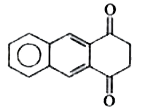 B
B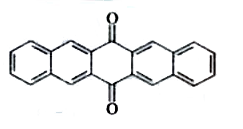 C
C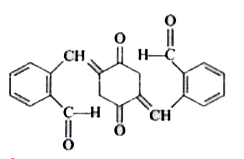 DNone of these
DNone of these - Question 3 - Select One
The addition reaction of enol or enolate to the carbonyl function of aldehyde or ketone is known as aldol addition. The β- hydroxyaldehyde or β- hydroxyketone so obtained undergo dehydration in second steo to produce a conjugated enone. The first part of reaction is an addition reaction and the second part is an elimination reaction. Carbonyl compound having α- hydrogen undergoes aldol condensation reaction.
2CH3CH2−O∣∣C−HϴOH−−−−−→ΔCH3CH2CH=C∣CH3−O∣∣C−H
Mechanism:
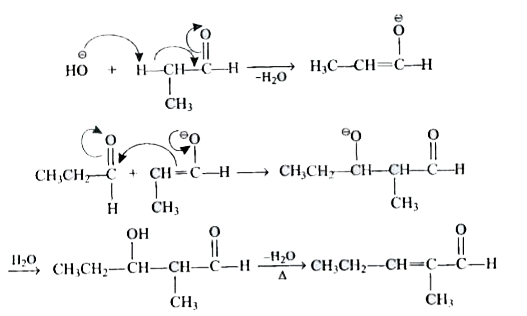
Whcih of the following will give aldol condensation?A BH−O∣∣C−HC
BH−O∣∣C−HC D
D
Write structural formulae and IUPAC names of carbonyl compounds with molecular formula C3H6O. Which out of these will be more reactive towards nucleophilic additions?
View SolutionStatement-1: Ethyne is more reactive than ethene towards hydrogenation
Statement-2: H2 in presence of Lindlar catalyst is more reactive than H2 with Pd in hydrogenation reaction
Statement-3: Dipole moment of o-xylene is greater than m-xyleneView SolutionWhich of the compound in each of the following pairs will react faster in SN2 reaction with ӨOH
(A) MeBr(I)andMeI(II)
(B) Me3C−Cl(III)andMeCl(IV)
 .View Solution
.View SolutionWhich is more reactive in each pair towards SN reaction ?
(A) CH3O∣∣CCl or CH3Cl (B)_E01_776_Q01.png)
(C) CH3O∣∣C∞verset(O)∣∣CCH3 or CH3OCH3View Solutionβ− Elimination or anti-eliminination reaction is carried out with base (Bo−) as shown below:

The following bases are used.
I. o−OH
II. ROo−
III. RCOOo− , IV. o−CN
V. NOo−3
The decreasing order of reactivity for the above elimination is:View Solution

